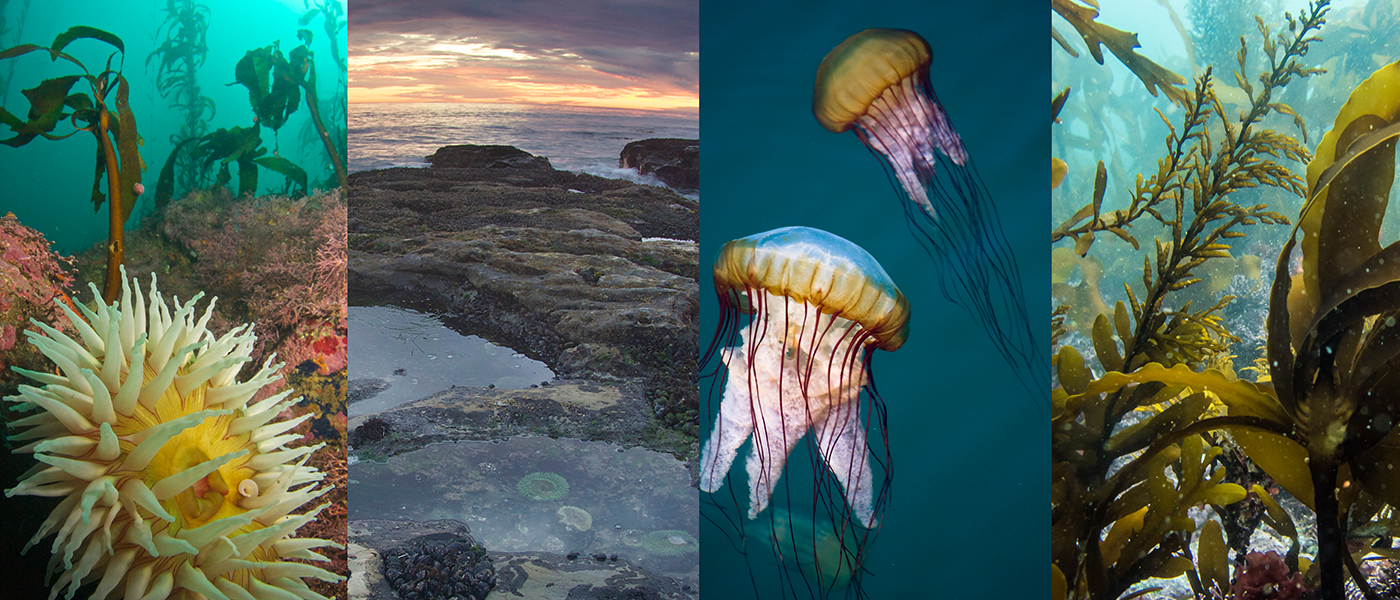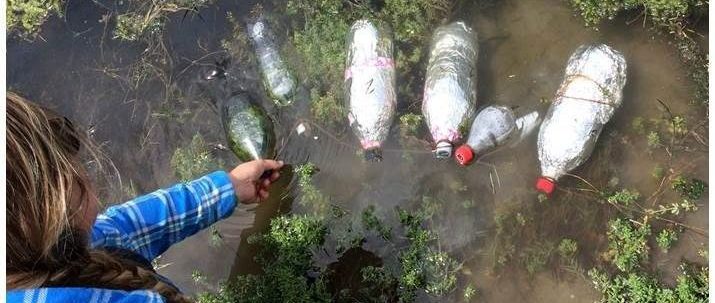Jason Smith
Research Faculty
Department: Environmental Biotechnology
Website: https://ebl.mlml.calstate.edu/
Contact:
email: jsmith@mlml.calstate.edu
phone: (831) 771-4126
office: 36, 37, 38 Norte
Biography:
Jason received his Ph.D. in Zoology from the University of Georgia in 1984 and his ongoing research program stems from his fascination with the molecular physiological ecology of marine algae. Specific research projects have ranged from nutrient regulation of coral-dinoflagellate symbioses, to investigation of the molecular regulation of nitrogen assimilation in marine phytoplankton, and biotechnology applications with diatoms and yeast. Current research seeks to identify molecular and biochemical markers associated with production of the neurotoxin domoic acid (DA) by diatoms in the genus Pseudo-nitzschia. His research group is developing molecular bioassays enabling identification of species actively metabolizing DA and well and genetic markers for robust enumeration of Pseudo-nitzschia population and community dynamics.
These research efforts helped Jason recognize the need for reliable and user friendly technologies for characterizing water quality variation over fine temporal and spatial scales, leading to his commitment to the ACT program. Jason has served as the Technical Coordinator for the ACT-Pacific Coast Region, since the program’s inception in 2001. In this position he has provided liaisons between resource managers, environmental scientists and the private sector, with the goal of fostering reliable and appropriate application of new technologies for monitoring water quality and ecosystem health in coastal waters. Jason was recently nominated to the ACT Board of Directors helping guide the national program’s future activities.
Research Interests:
- Physiological Ecology
- Marine Algae
- Molecular Biology
- Remote Sensing Technology
Curriculum Vitae:
Selected Publications
- Brunson, J.K., McKinnie, S.M.K., Chekan, J.R., McCrow, J.P., Miles, Z.D., Bertrand, E.M., Bielinski, V.A., Luhavaya, H., Oborník, M., Smith, G.J., Hutchins, D.A., Allen, A.E. and Moore, B.S. 2018. Biosynthesis of the neurotoxin domoic acid in a bloom-forming diatom. Science 361: 1356-1358.
- Bowers,H.A.; Ryan, J.P.; Hayashi, K.; Woods,A.L.; Marin III, R.; Smith, G.J.; Hubbard, K.A.; Doucette, G.J.; Mikulski, C.M.; Gellene, A.G., Zhang, Y.; Kudela, R.M.; Caron,D.A.; Birch, J.M.; Scholin, C.A. 2018. Diversity and toxicity of Pseudo-nitzschia species in Monterey Bay: perspectives from targeted and adaptive sampling. Harmful Algae 78:129-141.
- Ryan, J.P., Kudela, R.M, Birch, J.M., Blum, M., Bowers, H.A., Chavez, F.P., Doucette, G.J., Hayashi, K., Marin III, R., Mikulski, C.M., Pennington, J.T., Scholin, C.A., Smith, G.J., Woods, A., and Zhang, Y. 2017. Causality of an extreme harmful algal bloom in Monterey Bay, California, during the 2014-2016 northeast Pacific warm anomaly. Geophysical Research Letters 44, doi: 10.1002/2017GL072637.
- Adams, N.G., Schwenke, P., Smith, G.J. and Trainer, V.L. 2017. Microsatellite markers for population genetic applications in the domoic acid-producing diatom Pseudo-nitzschia australis Frenguelli (Bacillariophyceae). Protist 168:197-205.
- Keeling, P., et al. 2014. The Marine Microbial Eukaryote Transcriptome Sequencing Project (MMETSP): Illuminating the Functional Diversity of Eukaryotic Life in the Oceans through Transcriptome Sequencing. Plos Biology 12: e1001889.
- Kudela, R, C Anderson, D Lucas, D Caron, B Jones, G Sukhatme, C Scholin, J Ryan, J Birch, K Rajan, GJ Smith, Y Chao, G Doucette. 2014. A regional comparison of upwelling, coastal land use patterns, and HAB hotspots along the California coast. Proceedings of the 15th International Conference on Harmful Algae, Changwon, Korea.
- Savage, T.J. Smith, G.J., Clark, A.T. and Saucedo, P.N. 2012. Condensation of the iso-prenoid and amino precursors in the biosynthesis of domoic acid. Toxicon 59: 25-33.
- Kudela, R.M., Howard, M.A., Jenkins, B.D., Miller, P.E. and Smith, G.J. 2010. Using the molecular toolbox to compare harmful algal blooms in upwelling systems. Progress In Oceanography 85:108-121.
- Smith, G.J., Ladizinsky, N.L. and Miller, P.E. 2001. Amino acid profiles in species and strains of Pseudo-nitzschia from Monterey Bay California: Insights into the metabolic role(s) of domoic acid. Harmful Algal Blooms 2000. G.M. Hallegraeff, S.I. Blackburn, C.J. Bolch, and R.J. Lewis (eds). IOC-UNESCO pp 324-327.
- Smith, G.J. and Muscatine, L. 1999. The cell cycle of symbiotic dinoflagellates: Variation in G1 phase duration with anemone nutritional status and macronutrient supply in the Aiptasia -Symbiodinium symbiosis. Mar. Biol. 134:405-418.
- Smith, G.J., Zimmerman, R.C. and Alberte, R.S. 1992. Molecular and physiological responses of diatoms to variable levels of irradiance and nitrogen availability. I. Growth of Skeletonema costatum in simulated upwelling conditions. Limnol. Oceanogr. 37: 989-1007.
- Smith, G.J. and Alberte, R.S. 1991. Characterization of photosystem I associated polypeptides from the chlorophyll b-enriched alga Tetraselmis spp. (Prasinophyceae) and other chlorophyte algae. J. Phycol. 27:91-100.
- Hoegh-Guldberg, O. and Smith, G.J. 1989. Influence of the population density of zooxanthellae and supply of ammonium on the biomass and metabolic characteristics of the reef corals Seriatopora hystrix and Stylophora pistilllata. Mar. Ecol. Prog. Ser. 57:173-186.
- Hoegh-Guldberg, O. and Smith, G.J. 1989. The effect of sudden changes in temperature, light and salinity on the density and export of zooxanthellae from the reef corals Stylophora pistillata Esper and Seriatopora hystrix Dana. J. Exp. Mar. Biol. Ecol. 129:279-303.
- Weis, V.M, Smith, G.J. and Muscatine, L.. 1989. A "CO2-Supply" mechanism in zooxanthellate cnidarians: role of carbonic anhydrase. Mar. Biol. 100:195-202.
- Smith, G.J. 1988. The influences of host ontogeny and nutritional status on zooxanthellae population density and growth rate Endocyt. C. Res. 5:125-131.
- Smith, G.J. and Muscatine, L. 1986. Carbon budgets and regulation of the population density of symbiotic algae. Endocyt. C. Res. 3:213-238.
- Smith, G.J. 1986. Ontogenetic influences on carbon flux in adult and juvenile polyps of the sea anemone Aulactinia stelloides (Anthozoa: Actiniaria) and their endosymbiotic algae. Mar. Biol. 92: 361-370.




